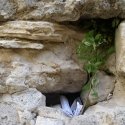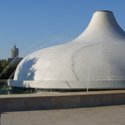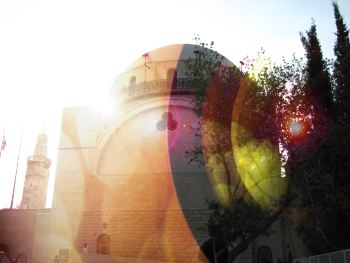The Temple of Jerusalem
The Temple of Jerusalem hovers like a ghost above the Western Wall – invisible today, its absence is a palpable ache that throbs stronger as you approach the Temple Mount.
The Jerusalem temple was originally built by King Solomon atop the Temple Mount in the 10th century BCE. The first structure was destroyed by the Babylonians in 586 BCE and was rebuilt in 516 BCE. This temple stood for over 500 years.
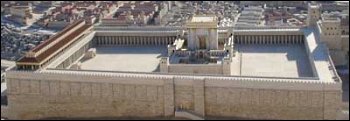 Model of the Temple Mount at the Israel Museum
Model of the Temple Mount at the Israel MuseumKing Herod renovated the Second Temple of Jerusalem and turned it into the largest sacred site in the Roman Empire. In order to vastly expand the existing precinct, he had his workers build four enormous restraining walls around the Temple Mount in Jerusalem. One of these is the Western Wall.
He then filled the space between the walls and the mount to create a level area, on which he built vaults to support a vast paved plaza. The Temple Mount plaza was 144,000 sq. meters in area (172 222.6 sq yards), the equivalent of 29 American football fields.
A feat like this, without the benefit of modern machinery, seems almost impossible. And yet Herod’s engineers accomplished this in only 18 months. How? By employing 1000 priests as masons and 10,000 laborers. Even with this amount of manpower, the results are amazing.
The Temple of Jerusalem: An Engineering Feat
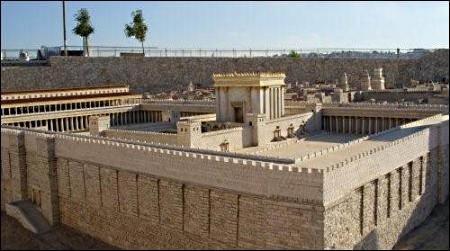
The dimensions for the Temple of Jerusalem were staggering: 460 meters to the east, 315 m to the north, 280 m to the south, and the western wall was 485 meters long.
The walls above ground rose 30 meters (ten stories tall), and their foundations were as deep as 20 meters in some places in order to reach bedrock. Each layer of the wall was recessed about 3 centimeters from the layer beneath it. This was to avoid the optical illusion created whenever you look up a tall, straight object, that it is about to fall over you.
Some of the quarried stones used in the Western Wall are so large that, to this day, archaeologists have trouble understanding how they could possibly have been transported. The smallest stones weight between 2 to 5 tons and the largest stone of them all – possibly the largest building stone in antiquity – is 13.6 meters long, 4.6 meters thick and 3.3 meters high, and is estimated to weigh 570 tons. The builders used dry construction – there is no cement between the stones. In fact, there’s nothing holding the stones together except their own weight.
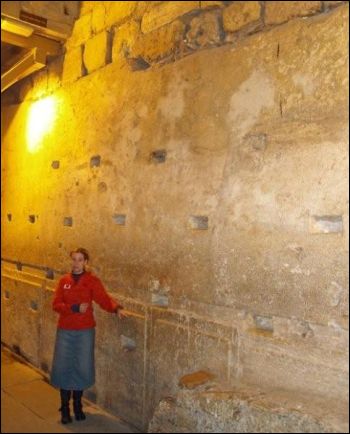 The largest stone in the Western Wall. Photo: David Shankbone, GNU Free.
The largest stone in the Western Wall. Photo: David Shankbone, GNU Free.On the plaza above, there were stoa – roofed colonnades – all along the perimeter, to house merchants and a large construction at the south end that was known as the Royal Portico. The renovated Holy of Holies was a wonder of marble and gold.
A gigantic arch – the remains of which you can still see to your right as you face the Western Wall – allowed pilgrims to ascend to the Temple Mount without interfering with the traffic of the adjacent street.
In the Ophel Archaeological Park, at the foot of the Temple Mount in Jerusalem, you can find the Hulda Gates, a series of gates through which people could ascend to the plaza through rising tunnels. You can also see archaeological remains of water cisterns, market stalls and structures from the period of the first Jerusalem temple.
Archaeologist Leen Ritmeyer has a fascinating blog devoted to Biblical Archaeology and especially the Temple Mount.
The destruction of the Temple in Jerusalem was one of the most tragic events in Jewish history. Its consequences reverberate to this day, affecting our lives and the history of mankind every moment.
Why was the Temple of Jerusalem so important that Jews mourn it with fasting and tears?
For an excellent articles on the
holiness of the Jerusalem Temple, see
Aish.com
and discover what we're missing and why we still mourn the Temple's destruction.
Quick Links
Jerusalem > Holy Sites > Temple in JerusalemDon't Miss What's New in Jerusalem!
Stay up-to-date with all that's new in Jerusalem and on this site. Subscribe to the RSS feed at the top of the navigation bar over on the left and you won't miss a thing.
And sign up for our free monthly newsletter to stay abreast of what's
going on, as well as new discoveries, seasonal events, cool Jerusalem tours and
exciting activities.
Subscribe to Our Newsletter
"As we had limited time in Jerusalem, I purchased your mini guide book and found it very informative. Thanks!" - Brian, S. Africa

Click here for the top 5 discount hotels in Jerusalem.


Recent Articles
-
Jerusalem of Gold: the Unofficial Anthem of Israel
May 22, 20 06:16 AM
-
Jerusalem Vacation Rentals
May 31, 19 09:46 AM
Jerusalem Video
6-min virtual tour
